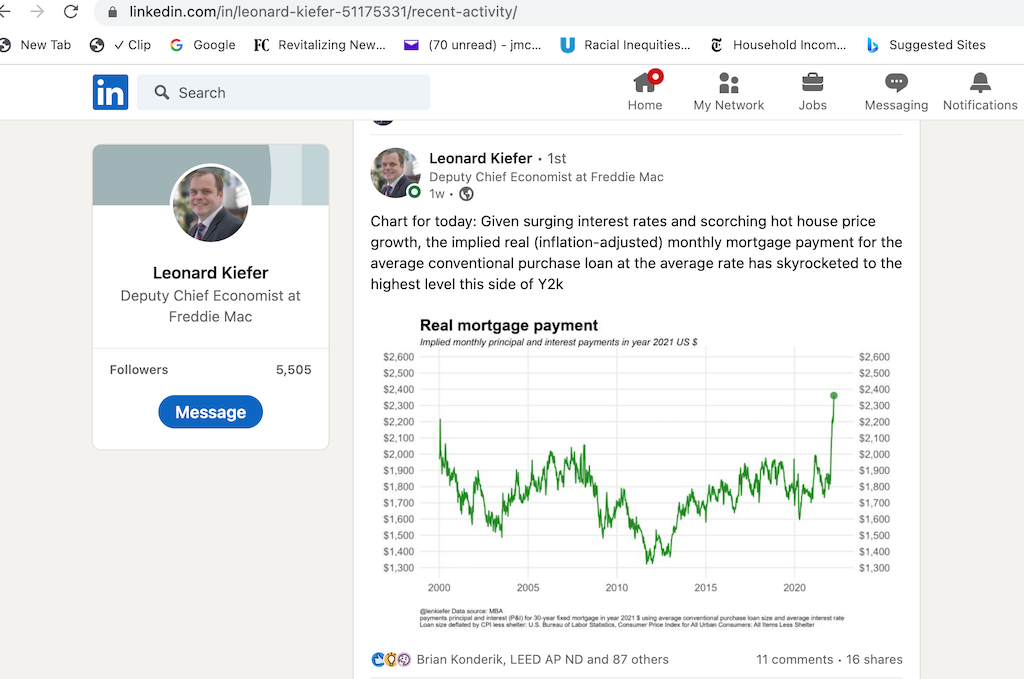Marketing & Sales
Two Action Tactics Homebuilders Can Take Now Amid Unknowns
The two biggest opportunity areas for resiliency and preventative fitness are on the land investment and sales fronts -- where you can focus on preparing for a bumpier ride ahead with an ultra conservative reforecast.

Until 1986, real live canaries braved real coal mines.
Technology put the little singing lifesavers out that line of work, leaving them to pursue vocal careers in other fields. Digital carbon monoxide detectors made them redundant in mining.
From a 2014 Gizmodo piece by Esther Inglis-Arkell:
The canary in the coal mine is always the first to go, whether in reality or in metaphor. It's a signal that something terrible is happening, whether it's financial disaster, medical breakdown, or political scandal."
This week's commentary from RH [Restoration Hardware] ceo Gary Friedman in a quarterly earnings call with Wall Street analysts Tuesday might have had more than a few canaries wistfully recalling their days as valiant, life-or-death voices of looming danger.
Big picture, Friedman – whose earnings call with analysts came in the the tail-end cohort of publicly traded quarterly earnings reporting, which meant a stronger recognition of the impact the Ukraine war is having on consumer spending behavior, traffic, and sales – struck a new and different chord in his characterization of business challenges and opportunities.
RH ceo Friedman's remarks sent a shiver rippling across Wall Street investment advisors because supply constraints were not the only litany of risks he identified to the business outlook. Demand – and the pounding consumer households are getting from inflation, surging interest rates, and geopolitical uncertainty – has already reared up in the retailer's numbers, sending the "electronic nose" that detects trouble ahead into palpitations.
Fortune staffer Will Daniel writes:
Friedman told investors rising uncertainty due to geopolitical tensions, persistent inflation, and rising interest rates have made issuing future guidance on RH’s earnings the most difficult proposition since the Great Recession era.
“I mean it's probably one of the most difficult guides since 2008 and '09, because we—we're right in the middle of this disruption from Ukraine and Russia,” he said.
The CEO also questioned whether the housing market’s current state was sustainable, a theme echoed by top housing market analytics and intelligence firms.
“You've got housing prices at all-time highs. I mean, is it sustainable? I don't know for how long the math doesn't make sense on kind of what's happening in the housing sector and other places.”
We have been writing of our belief that demand – pent-up, naturally-forming, and pulled-forward – contains trip-wires that can quickly siphon off what had been assumed to be coming on strong.
Calculated Risk's Bill McBride concludes his latest roll-up of real house prices, price-to-rent ratios, and price-to-median income data points with a one-two punch of insights that flank – in their way – RH ceo Gary Friedman's earnings commentary:
In general, this would suggest houses are the least affordable since the housing bubble. This says nothing about if “now is a good time to buy” (see the bottom of my post Housing: A Look at "Affordability" Indexes).
Also, in January, the average 30-year mortgage rates were around 3.45%, and currently mortgage rates are close to 4.9% - so we already know the “Affordability Price Index” will increase sharply over the next couple of months (meaning houses are even less affordable).
Freddie Mac deputy chief economist Leonard Kiefer attaches data to Bill McBride's prediction, with this chart that shows "real (inflation-adjusted) monthly mortgage payment for the average conventional purchase loan."

The canaries in the coal mine are singing.
The question keeps coming up, in a limbo of unknowing and doubt – when the tug, and traffic, and pace of order volumes continues to exceed the number of new homes builders can bring to the market – exactly what action is there to take?
The first "action" may be an acknowledgement that for each of the structural, positive, forward-driving components that make-up homebuyer demand, there are now – in motion, and changing at a sharp, volatile, concerning rate – elements of drag on that demand, be it inflation eroding household wherewithal, interest rates swinging monthly payments from the $1800s a month to closer to $2400s, etc.
That acknowledgment would be a shift from the widely held assumption that demographics destiny "has homebuilding and residential development's back." If that assumption were were to prove unfounded, what would that mean?
It would mean two forms of operational discipline that some builders have shown skill at in the past, but not very many of them. As one of our strategic-level homebuilding executive friends says:
Builders have a hard time intentionally shrinking investment when the market is hot.
- In land committee each week, anchor IRR models not only to Zero appreciation rates, but to a series of absorption pace scenarios – 10%, 20%, up to 60% slower than the past six-months to two-years average sales per community, per month.
- The other pivot – obvious and common sense to some, but missed by too many players – is from the order-taking to a full-on omnichannel engagement and sales array of skills. An "if we can build it, they will come" mentality has cloaked the new-home landscape, not only at the outset of 2020, but like a rocket once the pandemic momentum kicked into high gear. An action point right now is to gear up for highly targeted, value-driven, white-glove level customer focus, nurturing, and high-touch support to secure and deliver sales through a time many will be second-guessing large financial outlays of any kind.
After such a sustained period of time on an upward arc – a good number of your business' early-to-mid 30s team members never yet experienced a serious, extended disruption to housing's boom cycle – the natural tendency is to believe that trajectory is the norm.
That's when it's helpful to remember that a canary in the coal mine doesn't sign out when carbon monoxide is in the air. It goes silent.
Join the conversation
MORE IN Marketing & Sales
Do Homebuilders Waste Money On Marketing No One Trusts?
To build rapport with buyers, homebuilders need to be upfront, shift from selling to educating, and evolve their marketing strategies. Marketing strategist Barbara Wray shares time- and cycle-tested secrets.
Research: Supply Constraint Is Not No. 1 Driver Of Housing Crisis
Findings imply that constrained housing supply is relatively unimportant in explaining differences in rising house prices among U.S. cities -- suggesting that easing housing supply constraints may not yield the anticipated improvements in housing affordability.
Bad Data Bleeds Homebuilder Profits —Time to Stop the Loss
Hidden errors, fragmented systems, and outdated processes are eating into homebuilder margins. Industry experts reveal how better data can save time, cut costs, and boost profitability.
